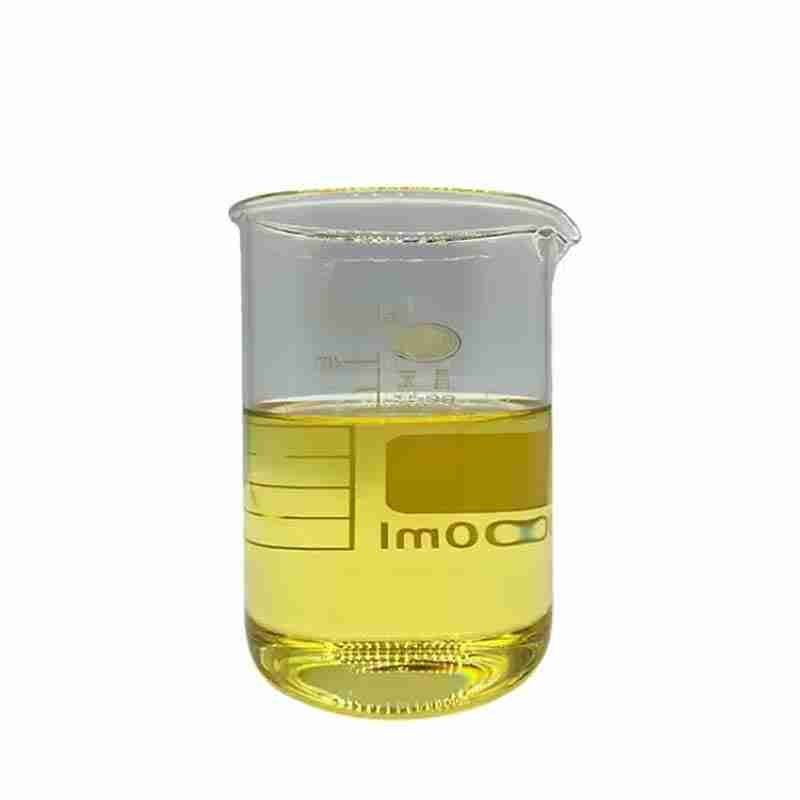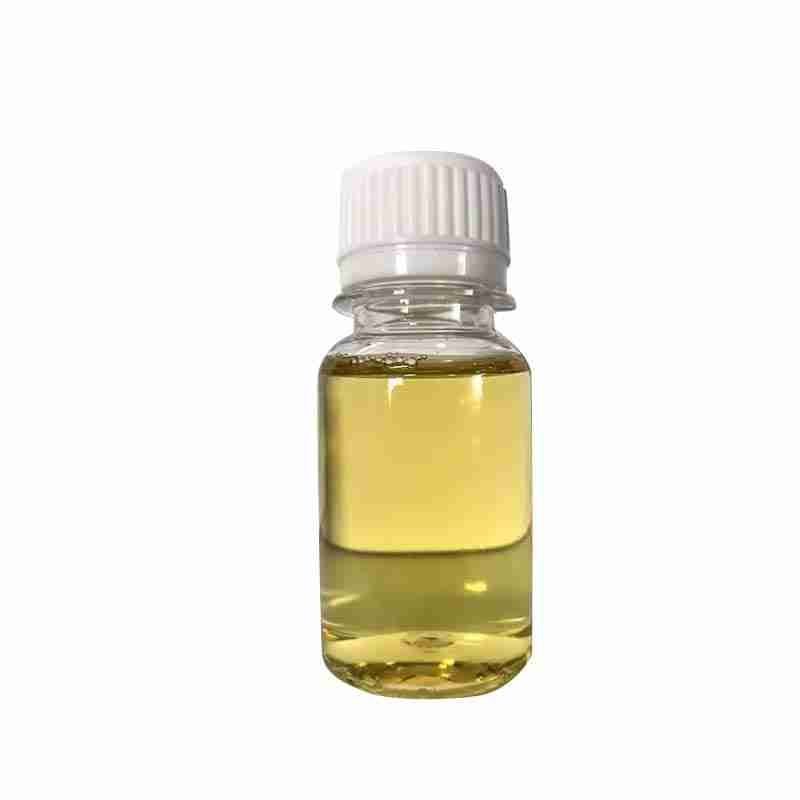Dioctyl Sebacate CAS# 122-62-3
Dioctyl sebacate, also known as bis-2-ethylhexyl sebacate, referred to as DOS, is produced by the esterification reaction of sebacic acid and 2-ethylhexanol. Suitable for polyvinyl chloride, vinyl chloride copolymer, nitrocellulose, ethyl cellulose and synthetic rubber, etc. It has high plasticizing efficiency and low volatility. It has excellent cold resistance, good heat resistance, light resistance and electrical insulation. It also has good lubricity when heated, making the product look and feel good, especially Suitable for making cold-resistant wire and cable materials, artificial leather, films, plates, sheets, etc.
发送询盘
Dioctyl Sebacate CAS# 122-62-3
| Bis(2-ethylhexyl) sebacate Basic information |
| Product Name: | Bis(2-ethylhexyl) sebacate |
| Synonyms: | OctoilDOS;octoils;Octyl Sebacate;octylsebacate;Plasthall DOS;Plexol 201;Plexol 201j;plexol201j |
| CAS: | 122-62-3 |
| MF: | C26H50O4 |
| MW: | 426.67 |
| EINECS: | 204-558-8 |
| Product Categories: | C12 to C63;Carbonyl Compounds;Chemical Synthesis;Esters;Organic Building Blocks;organic chemical;Fatty Acid Esters (Plasticizer);Functional Materials;Plasticizer;Building Blocks;bc0001;122-62-3 |
| Mol File: | 122-62-3.mol |
 |
|
| Bis(2-ethylhexyl) sebacate Chemical Properties |
| Melting point | -55 ??C |
| Boiling point | 212???C1?mm Hg(lit.) |
| density | 0.914?g/mL?at 25???C(lit.) |
| vapor pressure | <0.01 hPa (20 ??C) |
| refractive index | n20/D?1.450(lit.) |
| Fp | >230???F |
| storage temp. | Store below +30??C. |
| solubility | <1g/l |
| form | Liquid |
| color | Clear slightly yellow |
| Water Solubility | <0.1 g/L (20 oC) |
| Merck | 14,1251 |
| BRN | 1806504 |
| Stability: | Stable. Combustible. Incompatible with strong oxidizing agents. |
| InChIKey | VJHINFRRDQUWOJ-UHFFFAOYSA-N |
| LogP | 9.722 (est) |
| CAS DataBase Reference | 122-62-3(CAS DataBase Reference) |
| NIST Chemistry Reference | Decanedioic acid, bis(2-ethylhexyl) ester(122-62-3) |
| EPA Substance Registry System | Bis(2-ethylhexyl) sebacate (122-62-3) |
| Safety Information |
| Safety Statements | 24/25 |
| WGK Germany | – |
| RTECS | VS1000000 |
| TSCA | Yes |
| HS Code | 29171390 |
| Hazardous Substances Data | 122-62-3(Hazardous Substances Data) |
| Toxicity | mouse,LD50,oral,9500mg/kg (9500mg/kg),”Toxicometric Parameters of Industrial Toxic Chemicals Under Single Exposure,” Izmerov, N.F., et al., Moscow, Centre of International Projects, GKNT, 1982Vol. -, Pg. 62, 1982. |
- 2
- 2-diallylpent-4-en-1-amine
- 4
- 95-16-9
- Ammonium sulfamate
- Benzothiazole
- cas:67889-00-3ح2
- cas:83524-75-8 | pigment black 32
- cas:928836-00-4 | 2
- cas:932745-70-5 | 4
- Chemical Minerals
- Coconut diethanolamide
- Daily Chemicals
- discount
- for sale
- General pvc resin
- hexyl D-glucoside
- in stock
- Lauramidopropyl betaine
- LAURIC ACID MONOETHANOLAMIDE
- Petroleum Additives
- Plasticiser
- Ploymers
- price
- PVC
- quotation
- Raw Materal
- Remove term: Petroleum Additives Petroleum Additive
- SODIUM ETHYL 2-SULFOLAURATE
Related Products
3,4-Ethylenedioxythiophene is a synthetic organic compound characterized by its unique structure that includes a thiophene ring with ethylenedioxy substituents at the 3 and 4 positions. This compound is known for its potential applications in the synthesis of various organic materials, including pharmaceuticals and organic electronic devices such as sensors and solar cells. Its stability and reactivity make it a versatile intermediate in the chemical industry.
Silicones are a family of synthetic polymers known for their versatility and stability. They are heat-resistant, non-toxic, and have excellent electrical insulation properties. Commonly used in various industries such as construction, automotive, aerospace, and personal care products, silicones offer a wide range of applications from sealants and adhesives to lubricants and medical devices. Their resistance to extreme temperatures and weathering makes them a preferred choice for many high-performance applications.
Chemical Name: Imazalil Sulfate
CAS No.: 58594-72-2
Molecular Formula: C14H14Cl2N2O.H2SO4
Molecular Weight: 395.26
Appearance: Solid
Chemical Name: Choline salicylate
CAS No.: 2016-36-6
Molecular Formula: C12H19NO4
Molecular Weight: 241.28
Appearance: Red-Brown Crystal
Chemical Name: 3-Hydroxybutyric acid
CAS No.: 625-71-8
Molecular Formula: C4H8O3
Molecular Weight: 104.1
Appearance: White powder
1-Octanol, also known as Capryl alcohol or n-Octanol, is a clear, colorless liquid with a characteristic waxy odor. It is an alcohol with eight carbon atoms in its chain, making it a part of the aliphatic alcohol family. This compound is poorly soluble in water but is miscible with ethanol, diethyl ether, and chloroform . It has a melting point of approximately -15??C and a boiling point of around 196??C . 1-Octanol is used in the production of esters, plasticizers, and as a solvent or intermediate in the synthesis of various organic compounds. It also finds application in the fragrance industry as a fixative in perfumes and can be used in the formulation of flavor and scent compositions . It is important to note that 1-Octanol is flammable and should be handled with care, storing it away from sources of ignition and heat .
Chemical Name: Ammonium Iron(II) Sulfate
Synonyms: Diammonium iron bis(sulphate); iron (ii) ammonium sulfate
CAS No.: 10045-89-3
Molecular Formula: FeH5NO4S
Molecular Weight: 170.95
Chemical Name: UV-120
Other Name: (2’,4’-Di-tert-butylphenyl 3,5-di-tert-butyl-4-hydroxybenzoate)
CAS No.: 4221-80-1
Molecular Fomula: C29H42O3
Molecular weight: 438.66
Assay: ≥99%(LC)
Chemical Name: Quercetin-3-O-sophoroside
CAS No.: 18609-17-1
Molecular Formula: C27H30O17
Molecular Weight: 626.52
Terpene resin is a type of natural resin derived from terpenes, which are organic compounds found in various plants. It is known for its aromatic properties and is commonly used in the production of fragrances, flavorings, and as a component in adhesives and coatings within the chemical industry. Terpene resin offers a range of benefits, including enhancing the solubility of essential oils and providing a stable base for various applications. Its natural origin makes it a preferred choice for eco-friendly products.
Chemical Name: Arabic gum
CAS No.: 9000-01-5
Appearance: powder
Polyhexamethylene guanidine hydrochloride, often abbreviated as PHMG-HCl, is a high molecular weight polymeric biguanide compound known for its potent antimicrobial properties. With a chemical structure that features a long chain of methylene groups bridged by guanidine units, PHMG-HCl is effective against a broad spectrum of microorganisms, including bacteria, viruses, and fungi.
This hydrochloride salt form of PHMG is highly soluble in water and is commonly used in various applications due to its non-irritant and non-toxic nature to human skin and mucous membranes. It is widely recognized for its ability to form a colorless and odorless solution, making it an ideal choice for use in personal care products, medical disinfectants, and water treatment processes.
The versatility of PHMG-HCl lies in its cationic nature, which allows it to bind to negatively charged microbial cell walls, disrupting their integrity and leading to cell death. This mechanism of action contributes to its effectiveness as a preservative and disinfectant. Moreover, its substantivity, or the ability to adhere to surfaces, enhances its long-lasting antimicrobial activity.
In summary, Polyhexamethylene guanidine hydrochloride is a reliable and efficient antimicrobial agent, pivotal in industries where hygiene and cleanliness are paramount, offering a safe and sustainable solution for microbial control.


















